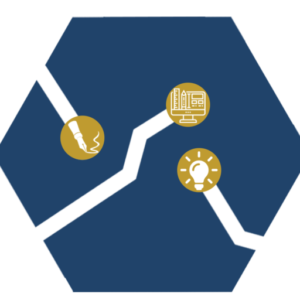This is the second post in our series about microlearning. According to Gloria Mark, a digital distraction expert and professor at the University of California, Irvine, the average office worker averages 11 minutes of work between interruptions. Trainings that last longer than 11 minutes have a smaller chance of effectiveness than shorter microlearning modules.
In our first post about microlearning, we discussed its advantages: accessibility, flexibility, engagement, cost, and efficiency. The easiest and most productive way to include these benefits in your microlearning modules is by using templates. Using templates allows both the module designer and the learner to take advantage of the full potential of microlearning. Templates are structured frameworks that streamline the creation of microlearning and enhance their effectiveness by ensuring consistency, relevance, and adaptability.
Advantages of using templates in microlearning development

Accessibility and flexibility
Accessible. Not all learners have the same needs, but by designing templates with built-in accessibility features, developers ensure that every module they create from that template will be available to all learners.
Device-friendly. Microlearning is often implemented in on-the-go learning, so creating modules that are usable on a variety of devices is critical. Developing mobility in the template means designers will not have to continue to recreate that flexibility each time they produce a new module. This is great news for today’s modern workforce, allowing individuals to access training materials easily wherever they are, fostering a more accessible and convenient learning experience.
Scalable. As an organization grows, its demand for scalable training solutions increases. Templates provide a scalable foundation for microlearning programs, ensuring the expansion of such programs stays manageable yet consistent.
Quick content updates. The ability to update training content quickly is crucial to the success of any training curriculum, particularly microlearning. Templates facilitate such agility by allowing rapid modifications to existing modules, ensuring that training materials stay current and aligned with industry trends and organizational changes. A designer can also quickly create modules for assorted topics based on an already-created template.

Engagement
Enhanced engagement. Templates can (and should) incorporate interactive elements, multimedia, and games, enhancing learning engagement. When combined with engaging elements, a structured format keeps learners’ attention, making the experience more enjoyable and memorable – exactly what is needed for learners to retain information and apply it to their jobs.
Predictability. Users quickly adapt to the design of microlearning modules in a curriculum, expecting specific content in the same places throughout the entire program. Once learners view a few modules, they know what to expect and can focus on the content instead of trying to figure out how to navigate the system. They understand where to find important information and recognize how the modules work.
Measurable outcomes. Integrating assessment tools, quizzes, and interactive elements into a template facilitates the measurement of learning outcomes. This data-driven approach allows organizations to gauge the effectiveness of their training modules, giving them specific information when making informed decisions about refining content as needed.

Cost and efficiency
Cost-effectiveness. Why develop microlearning content from scratch for each module when taking the time to create a template saves time and money overall? Templates provide reusable designs, reducing the need for complicated, costly, and time-consuming design and development for each new piece of content.
Efficiency. After gaining approval for a template, the approval process for future modules is much faster. The designer knows the template is already approved and ensures the content fits into it, and stakeholders can spend more time approving actual content as opposed to every design element.
Final thoughts
Basing microlearning modules on a template significantly enhances the efficiency and effectiveness of the learning experience. The adaptability of templates ensures scalability and ease of updates, allowing organizations agility when responding to evolving training needs. The user-friendly nature of such modules empowers designers to develop engaging content while speeding up design and approval timelines. Most importantly, templates allow learners to focus on content without getting distracted by design inconsistencies.
Related blogs
Why Outsource Instructional Design?
Is Your eLearning Accessible to Everyone?
Resources
Huffington, Arianna and Nottebohm, Olivia. “More Than Work: Finding Focus in the Digital Age.” 7/28/20. Accessed 12/21/23. https://community.thriveglobal.com/ways-to-focus-cut-busy-work-digital-age/



